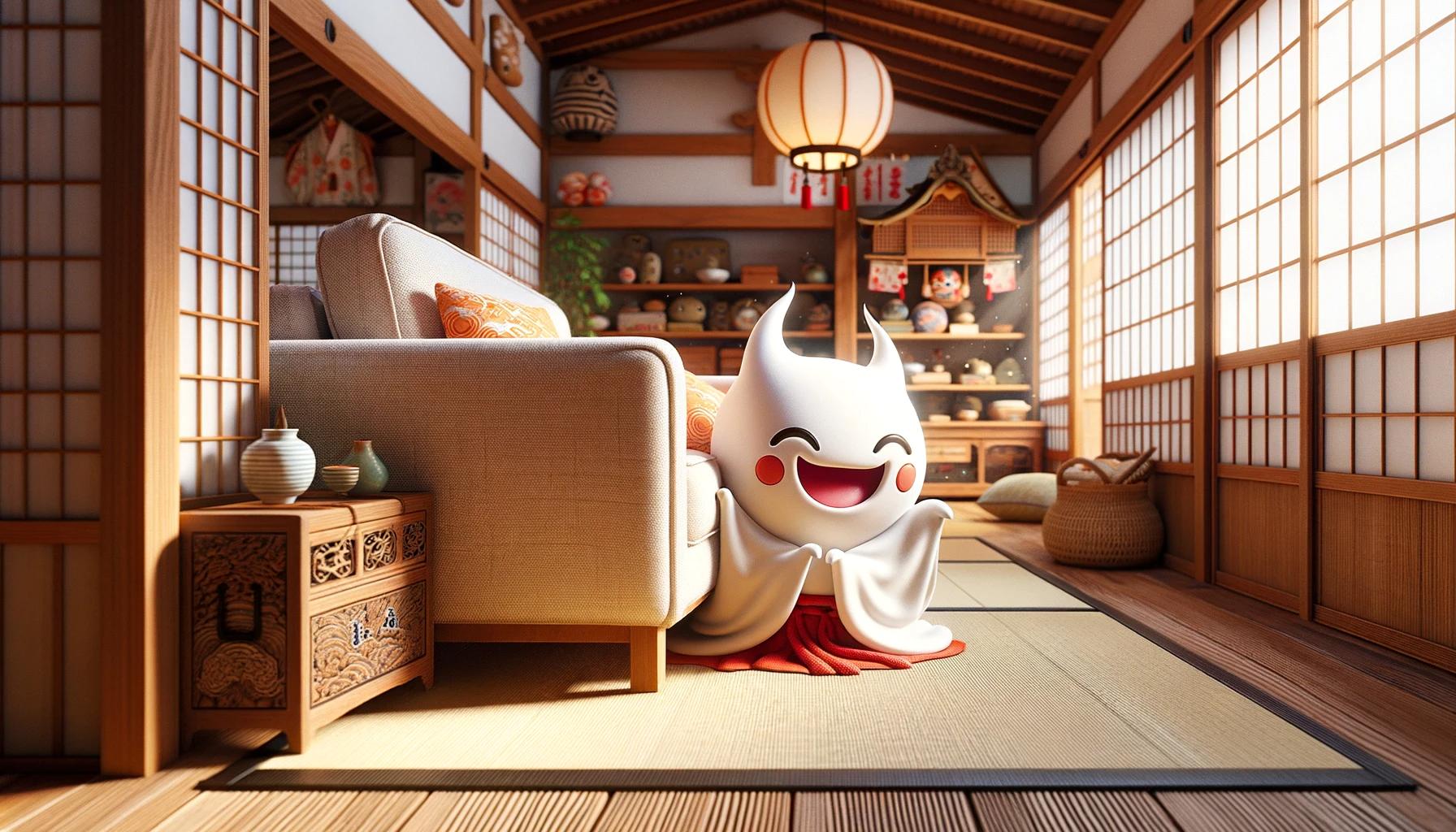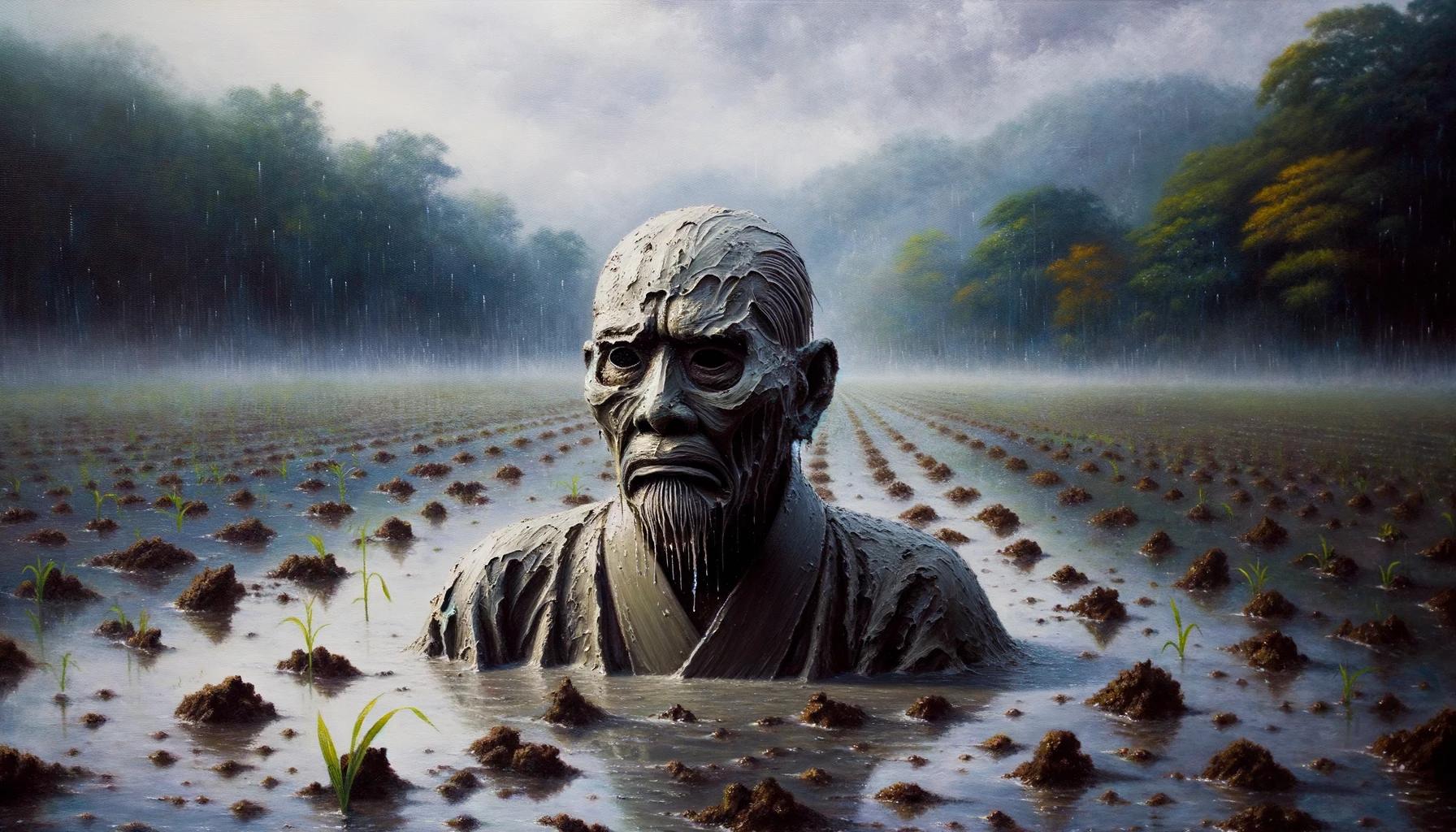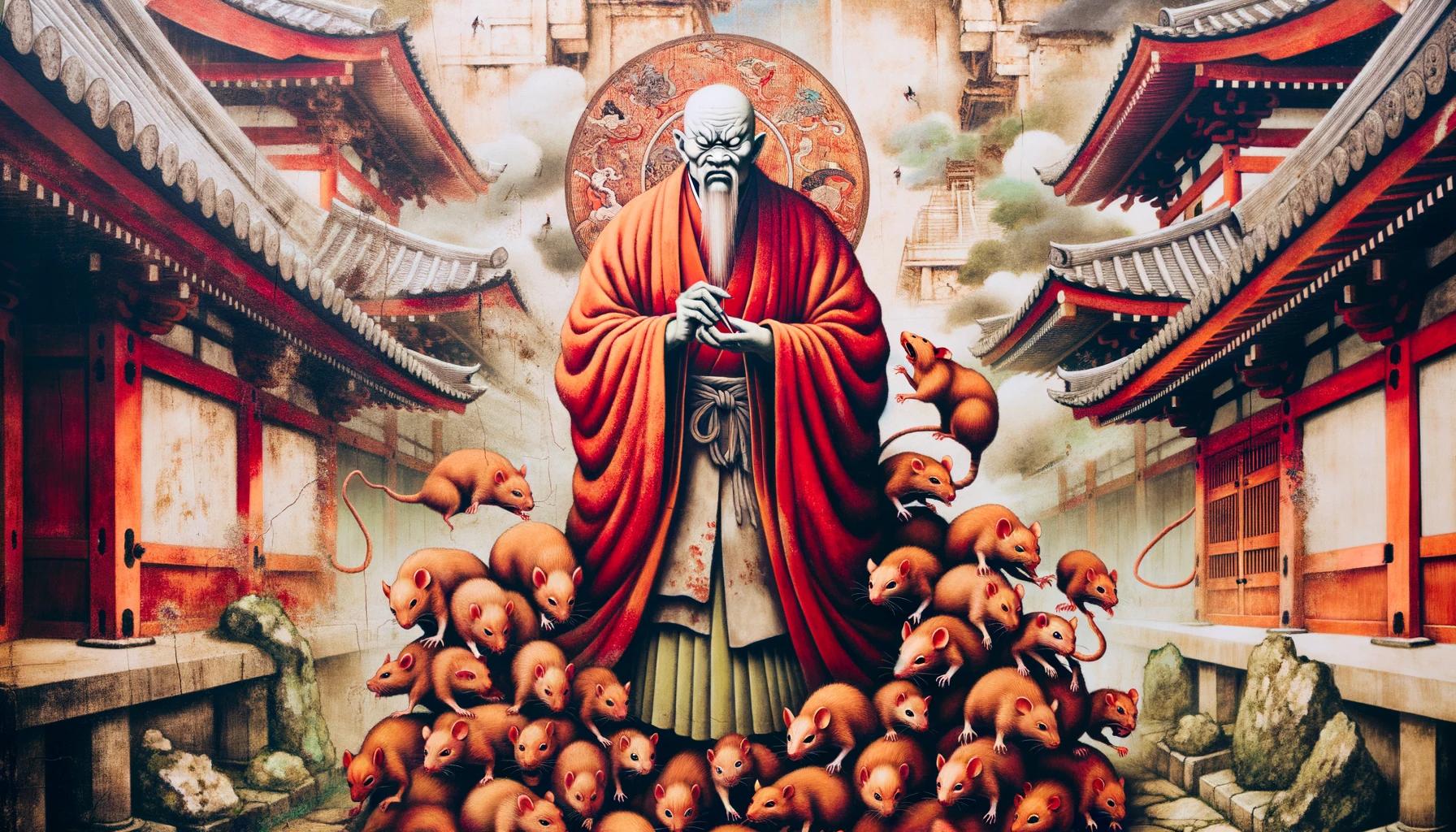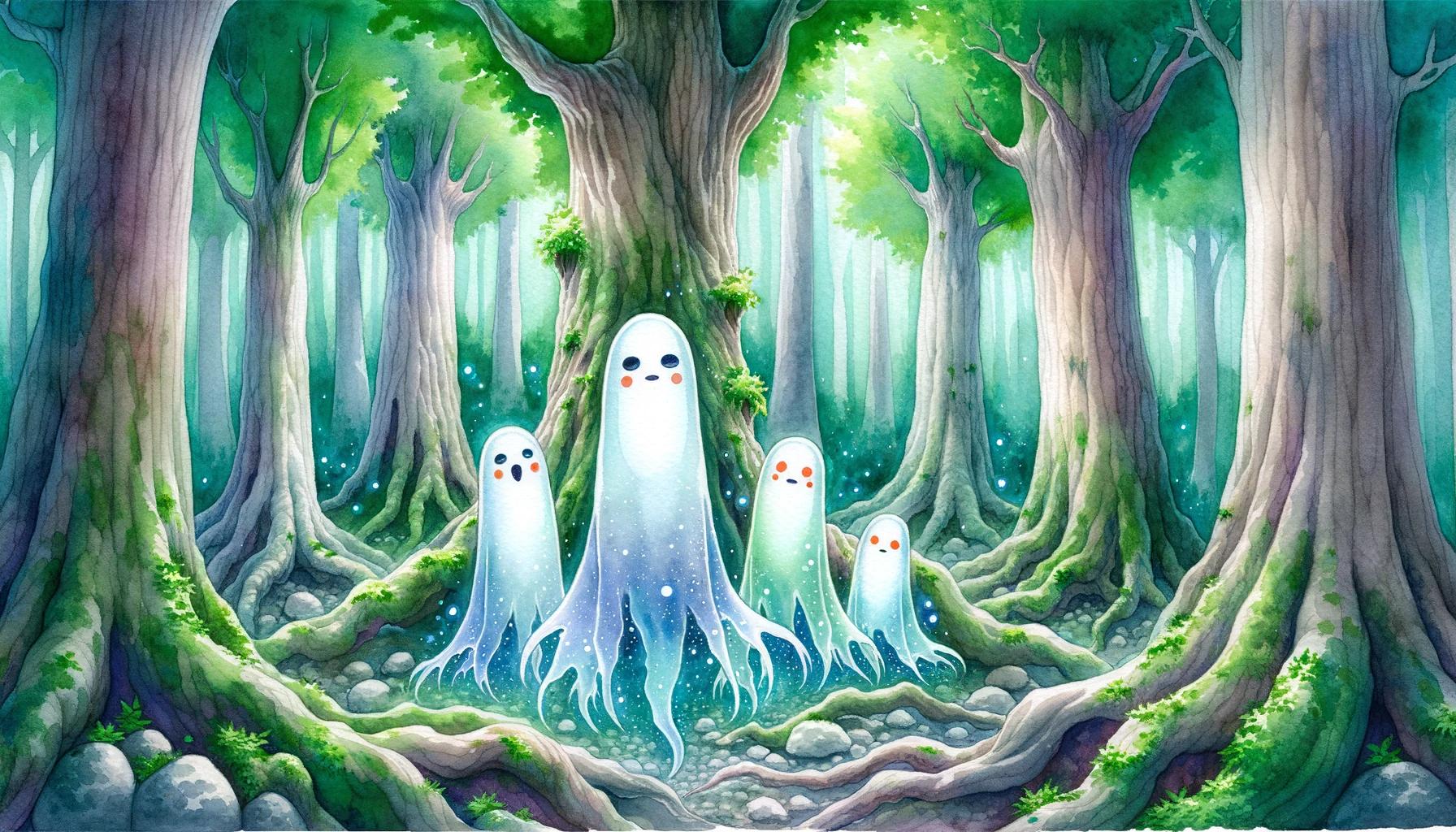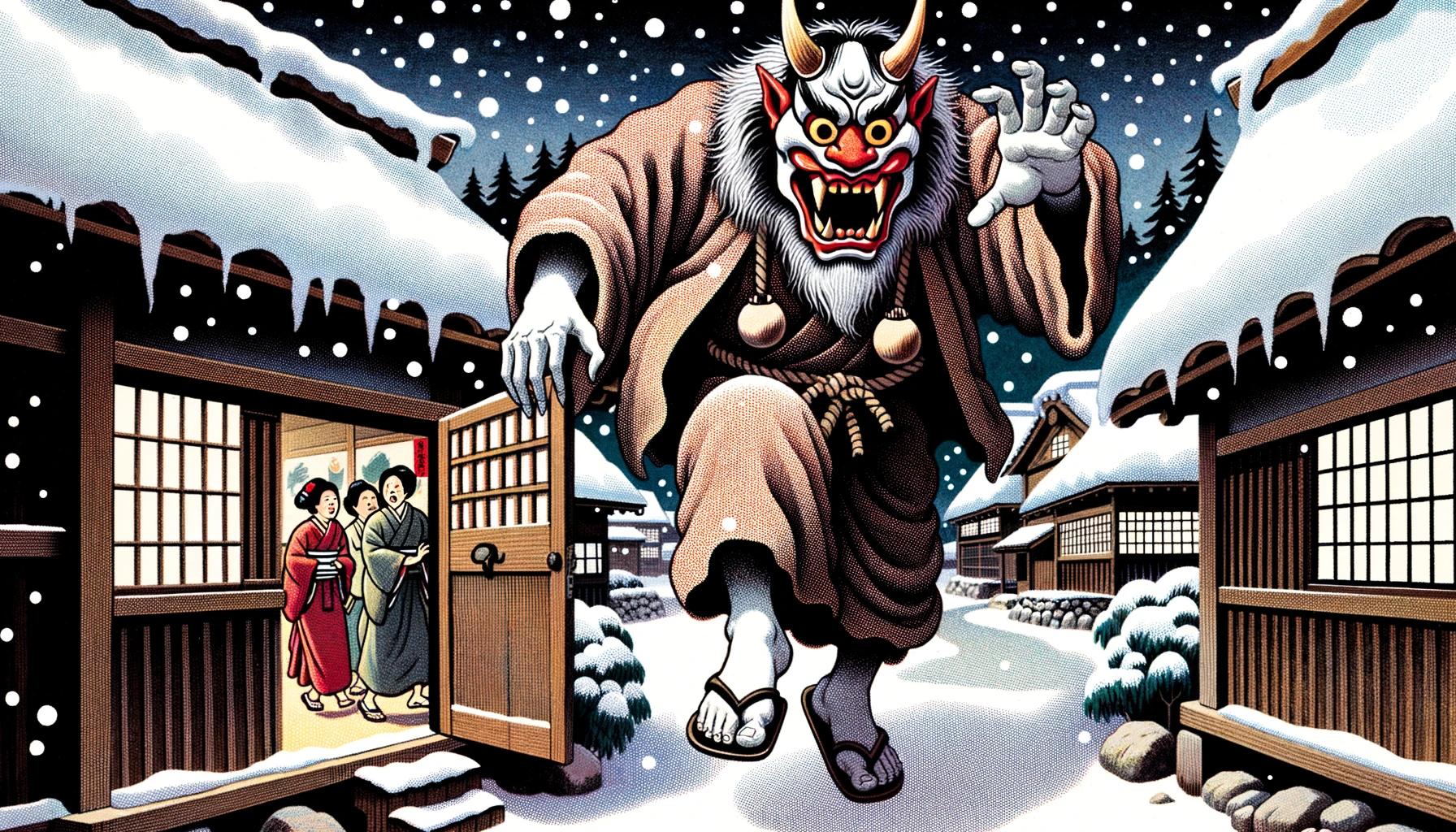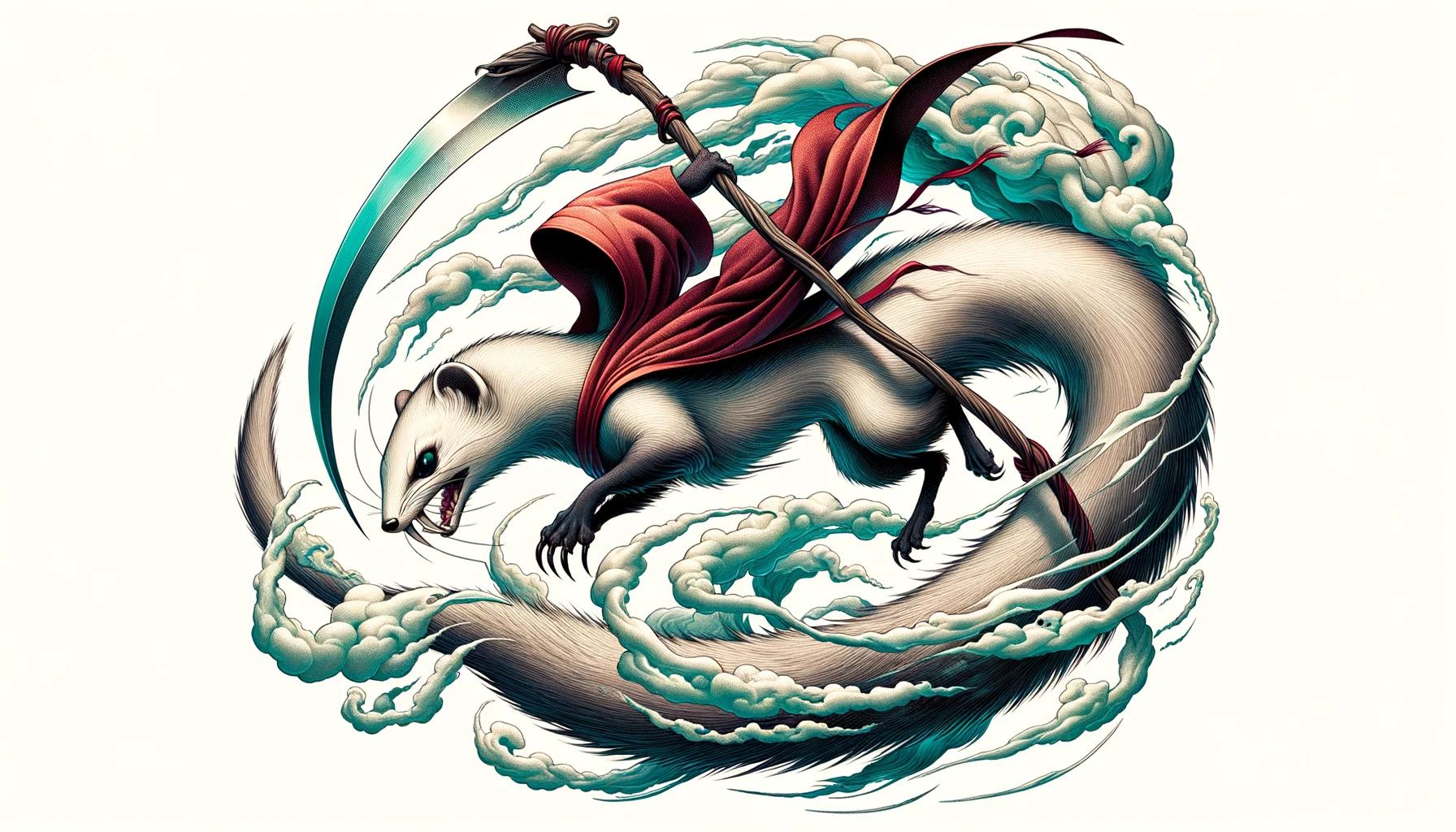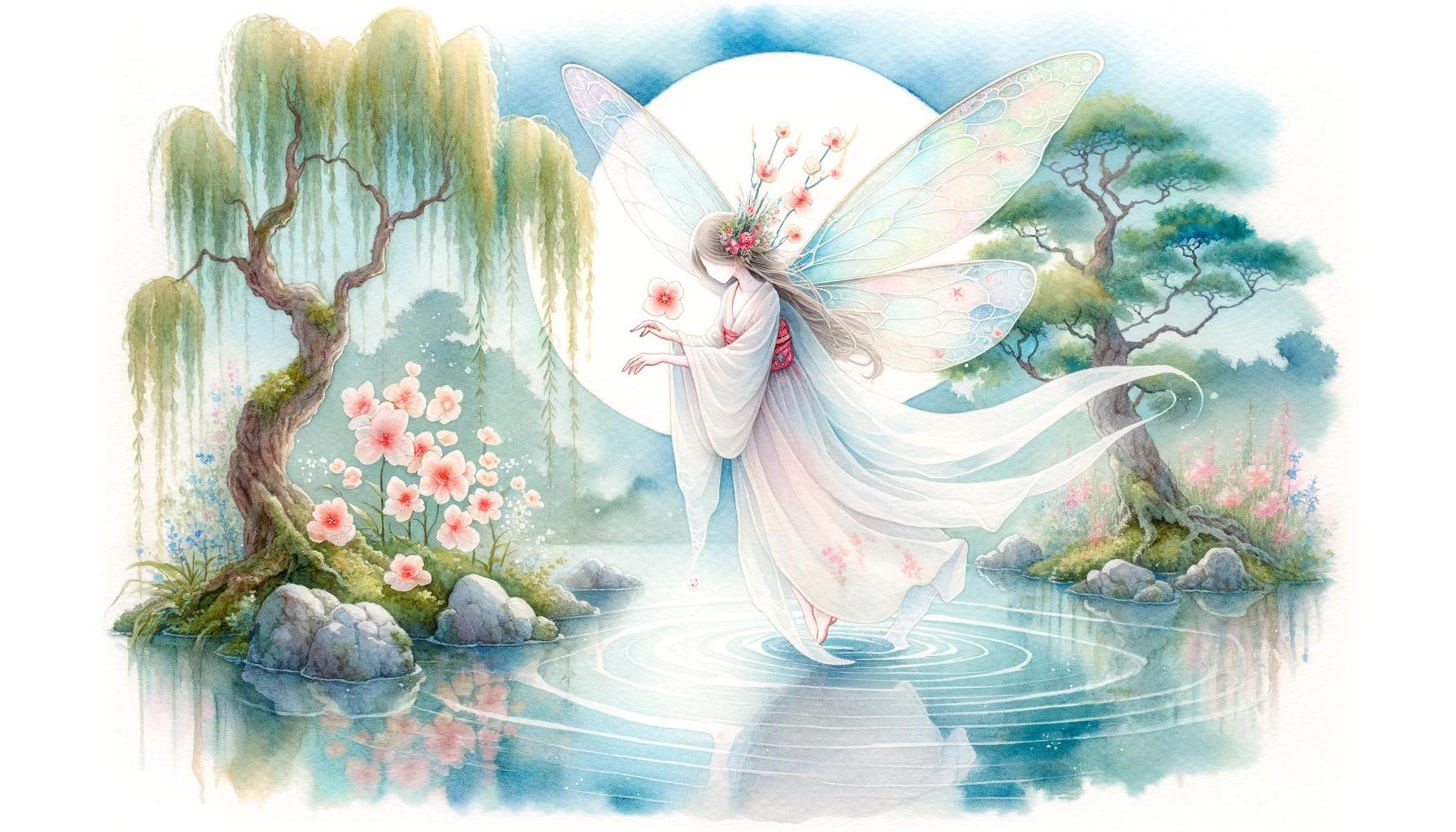Japanese Mythology Creatures: Exploring the Fascinating Beings of Japanese Folklore
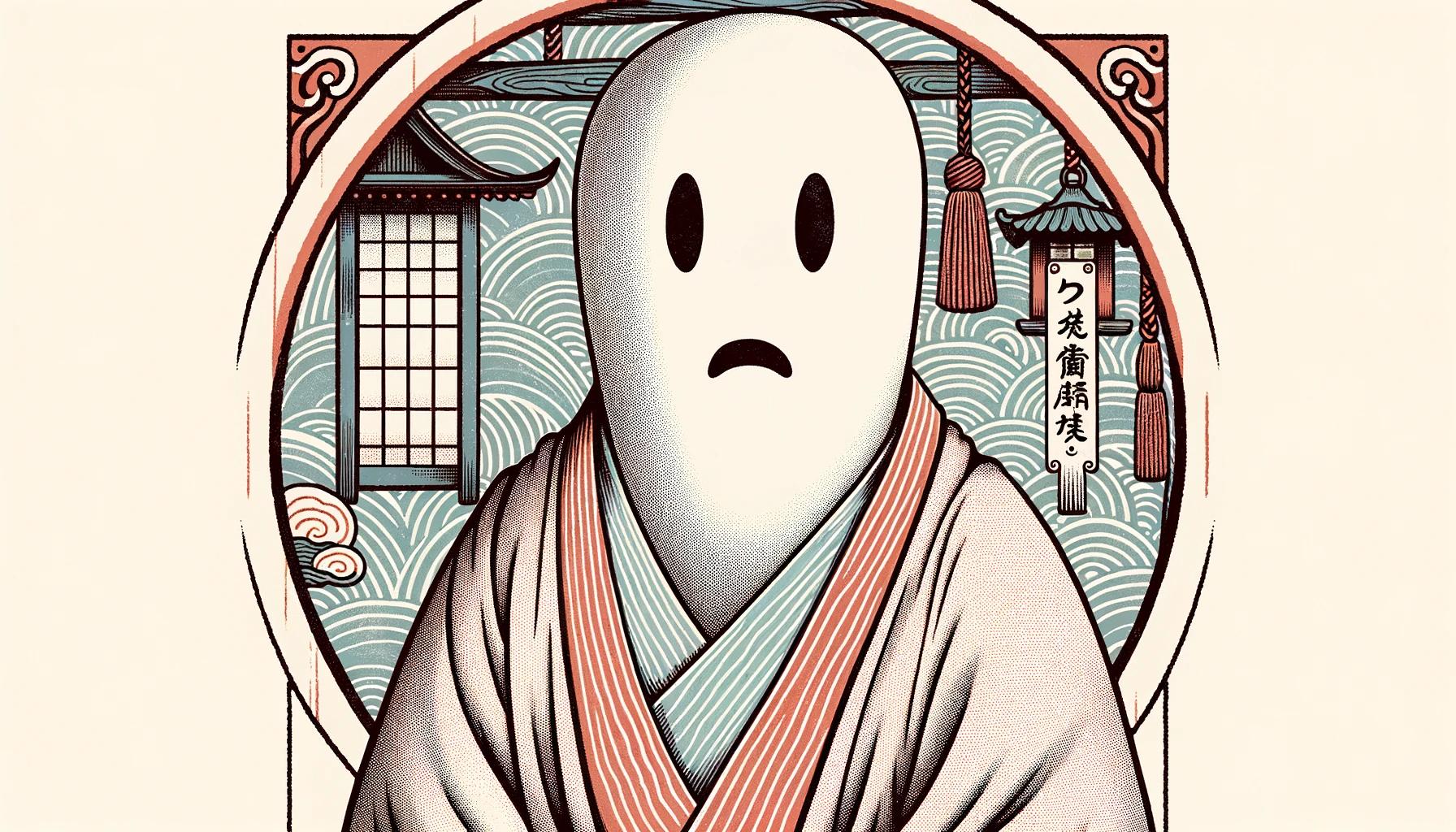
Japanese Mythology Creatures are a captivating aspect of Japanese culture, filled with mythical beings and monsters that have fascinated people throughout history. Tanuki, mischievous shapeshifting raccoon dogs, and kitsune, enigmatic fox spirits with magical abilities, are just a few examples.
Kappa, water deities known for their tricks, and Tengu, shapeshifting guardians of nature, also play significant roles. Additionally, there are dark spirits called Shikigami associated with legends and terrifying abilities.
Delving into the richness of Japanese folklore, these creatures have become integral parts of popular culture and art.
Overview of Japanese Mythology
Japanese mythology is a rich and fascinating tapestry of ancient tales, legends, and beliefs that have shaped the cultural landscape of Japan. It encompasses a wide range of supernatural beings, deities, and creatures that are deeply rooted in the country’s history and folklore.
These mythical elements have left a lasting impact on Japanese culture, influencing art, literature, theater, and even everyday traditions.
At the core of Japanese mythology are various creation myths that explain the origins of the world and the Japanese archipelago. These creation stories often involve divine beings and epic battles, reflecting a unique blend of Shinto and Buddhist influences.
One significant aspect of Japanese mythology is its emphasis on the supernatural and the interaction between humans and the spirit world. Various creatures and deities play prominent roles in these stories, acting as intermediaries, guides, protectors, or even tricksters.
- Yōkai: These supernatural entities encompass a wide range of creatures, including shape-shifters, spirits, ghosts, and monsters. Each yōkai has its own unique characteristics and origins, most often derived from folklore and local legends.
- Oni: Known as demonic creatures, oni are often depicted as fearsome giants with horns and carrying clubs.
They are associated with chaos, disease, and sometimes even act as punishers of evildoers.
- Yūrei: These are yokai spirits of the deceased, often associated with tragic or vengeful stories. Yūrei are believed to dwell in specific locations, such as haunted houses or near bodies of water.
- Kasa Obake and Chōchin Obake: These are animated objects that come to life, such as umbrellas and paper lanterns, respectively.
They are mischievous creatures that add a touch of whimsy to Japanese folklore.
Exploring Japanese mythology provides a captivating glimpse into the intricate tapestry of Japan’s cultural heritage.
It offers insights into the spiritual beliefs, values, and narratives that have shaped the nation’s identity. From the mischievous Tanuki and enigmatic Kitsune to the powerful Kappa and transformative Tengu, the creatures of Japanese mythology continue to inspire awe and fascination both in Japan and around the world.
The Role of Mythical Creatures in Japanese Culture
Japanese culture is deeply interwoven with the presence of mythical creatures, which hold significant roles and symbolism within Japanese folklore. These creatures not only stimulate the imagination but also serve as powerful metaphors and representations of various aspects of human existence.
For centuries, mythical creatures like Tanuki, Kitsune, Kappa, Tengu, and Shikigami have played central roles in shaping the storytelling traditions, artistic expressions, and spiritual beliefs of the Japanese people.
These creatures embody both the light and dark aspects of the human psyche, conveying moral lessons, social values, and warnings. They challenge human perceptions, offering a different lens through which to understand and navigate the complexities of life.
Moreover, these mythical beings are often associated with specific natural elements, locations, or phenomena, reflecting the deep connection between the Japanese people and their natural environment. They are rooted in the cultural fabric, appearing in various forms of artistic expression, including literature, theater, visual arts, and even modern entertainment.
By studying the roles and characteristics of these mythical creatures, one can gain valuable insights into the history, beliefs, and values that have shaped Japanese culture. Their stories have served as a source of inspiration, sparking creativity and admiration among generations.
Tanuki: Mischievous Shapeshifters of Japanese Folklore
Tanuki, known as Bake-danuki or “monstrous raccoons” in Japanese mythology, are fascinating creatures that have become protagonists in numerous myths and folktales. These mischievous shapeshifters possess the ability to transform into humans, animals, objects, or parts of nature, often surprising unsuspecting travelers with their pranks.
Legends and Folktales featuring Tanuki
Tanuki feature prominently in Japanese folklore, captivating the imaginations of storytellers and listeners alike. They are not inherently evil, but rather mischievous tricksters who enjoy playing practical jokes and even stealing money from travelers for their own amusement.
Mythical Abilities and Characteristics of Tanuki
Tanuki are known for their supernatural abilities and unique characteristics. In addition to their shape-shifting talents, they often portray exaggerated features, with representations often highlighting their comically large testicles, which are sometimes depicted as being used as traveler’s backpacks or drums.
Tanuki possess a jovial and carefree nature, embodying the virtue of enjoying life to the fullest.
Tanuki Statues and Cultural Significance
Strolling through Japanese temples, you may come across statues of Tanuki. These statues typically depict them carrying a bottle of sake, symbolizing their affinity for revelry. Tanuki statues are characterized by their large bellies, wide eyes, and protective hats.
These statues hold cultural significance, representing the enduring influence of these creatures in Japanese culture and folklore.
Kitsune: Enigmatic Fox Spirits in Japanese Mythology
Kitsune are fascinating creatures in Japanese mythology, renowned for their enigmatic nature and magical abilities. These fox spirits hold a prominent place in folklore and have captivated the imaginations of people throughout history.
Let’s delve into the world of kitsune and explore their various aspects:
Good and Evil Kitsune in Folklore
In Japanese folklore, kitsune can be seen as both benevolent and malevolent beings. They are often depicted as mischievous tricksters, capable of shape-shifting into human form. In some tales, kitsune offer guidance, bestow blessings, and act as protectors of the natural world.
On the other hand, some stories portray them as cunning and malicious, using their powers to manipulate humans for their own gain.
Powers and Traits of Kitsune
Kitsune possess an array of extraordinary abilities. They are renowned for their shape-shifting skills, capable of transforming into various forms, including humans, animals, and objects. Kitsune are also known for their heightened intelligence, long lifespans, and exceptional illusionary magic.
Legends suggest that kitsune grow additional tails as they age, with nine-tailed kitsune being the most powerful, possessing almost god-like abilities.
Kitsune and their Connection to Inari Shrines
Kitsune have a strong association with Inari, the Shinto deity of fertility, agriculture, and rice. Inari shrines often feature statues or emblems of kitsune, symbolizing their connection to the deity.
Kitsune are believed to serve as messengers and guardians of Inari, bringing good fortune and protection to those who worship at these shrines. It is not uncommon to find statues of kitsune with multiple tails in Inari shrines across Japan.
These are just a few aspects of the enchanting world of kitsune in Japanese mythology. These elusive fox spirits continue to inspire tales, art, and entertainment, leaving a lasting impact on Japanese culture and captivating the fascination of people both in Japan and beyond.
Kappa: Water Deities and Tricky Creatures
Kappa, known as water deities in Japanese mythology, possess unique features and have been integral to various legends. These mischievous creatures display both amphibian and reptilian traits, with appearances ranging from childlike to adult-like figures.
Notable attributes include green or slimy scaly skin, webbed hands and feet, and turtle-like shells on their backs. Their beak-like mouths house a bowl-shaped indentation filled with vital fluid.
Unique Features and Legends of Kappa
Kappa’s distinct appearance sets them apart from other mythological creatures.
Their ability to breathe underwater, coupled with their mischievous nature, often leads them to pull pranks on unsuspecting humans. Legends speak of their preference for challenging travelers to sumo matches or engaging in harmless trickery.
However, more perilously, they are known to lure humans towards bodies of water, intending to drown them.
Kappa’s Relationship with Japanese Culture
Kappa’s presence in Japanese culture extends beyond folklore. These aquatic creatures have left an indelible mark on various aspects of Japanese society. From literature and art to popular culture, their depiction remains prevalent.
Kappa have become an enduring symbol, representing the fascinating blend of mythical beliefs and the reverence for the natural environment.
Kappa’s Fondness for Cucumbers and Sumo
An intriguing characteristic of kappa is their fondness for cucumbers. This affinity has even led to the creation of a type of sushi roll known as Kappamaki – a roll filled with cucumber.
Additionally, due to their purported interest in sumo wrestling, kappa stories often involve encounters with wrestlers. These cultural connections further add depth to the legends and portrayals of kappa throughout Japanese history.
Tengu: Shapeshifting Beings and Guardians of Nature
Tengu are fascinating creatures deeply rooted in Japanese folklore. They have undergone an evolution in their appearance and characteristics throughout history, transitioning from monstrous beings with crow-like features to their more recognizable portrayal with long noses and red faces.
This transformation reflects their evolving role in Japanese mythology as they transitioned from mischievous entities to guardians of nature and protectors of mountains and forests.
Evolution of Tengu’s Appearance and Characteristics
Originally depicted as bird-like monsters, Tengu have transformed over time into beings with distinctive characteristics. In their present form, they possess long noses called ‘tengu-bā’ and red faces, symbolizing their divine nature.
With wings, they are capable of flight, signifying their connection to the heavens. These visual cues represent their transformation into powerful, spirit-like creatures, bridging the gap between the human and divine realms.
Tengu’s Protective Role and Influence in Japanese Folklore
Tengu have transitioned from mischievous tricksters to benevolent guardians of nature. Revered for their wisdom and martial prowess, they are considered protectors of mountains and forests, granting spiritual and physical guidance to those who seek it.
Many stories portray Tengu as mentors to skilled warriors and practitioners of martial arts, passing down their knowledge and enhancing their abilities. They hold a respected place in Japanese culture, representing strength, discipline, and the spirit of the wild.
Daitengu: Powerful Variants of Tengu
Daitengu, a specialized variant of Tengu, are believed to possess even greater powers and knowledge. Characterized by their human-like features, wearing robes and having elongated noses, Daitengu are associated with extreme intelligence and formidable skills.
According to legends, their level of power directly corresponds to the size of their noses. However, some Daitengu have used their abilities to cause natural disasters and inflict suffering upon humans, showcasing the potential duality within their nature.
Shikigami: Dark Spirits in Japanese Mythology
Shikigami are enigmatic entities deeply rooted in Japanese mythology, often associated with dark and terrifying forces. Their origins and associations trace back to ancient beliefs and legends, captivating the imaginations of those delving into Japanese folklore.
Origins and Associations of Shikigami
The origins of Shikigami can be found in the practices of onmyōdō, a traditional Japanese esoteric cosmology that encompasses various mystical and spiritual elements. Shikigami were originally spirits that onmyōji, Japanese occult practitioners, would utilize for protective purposes or to carry out their bidding.
These spirits were believed to be summoned or created through intricate rituals, often involving written spells or talismans. Shikigami were thought to embody a combination of spiritual energy and divine power, making them obedient and formidable entities under the control of the summoner.
Terrifying Abilities and Representations of Shikigami
Shikigami possess a wide range of terrifying abilities in Japanese mythology, making them formidable opponents or allies depending on the situation. Some of these abilities include:
- Shape-shifting into various forms to deceive or frighten their targets.
- Manipulating objects through telekinesis, often using this power to cause chaos or inflict harm.
- Inflicting curses or bringing misfortune upon individuals who cross their path.
- Summoning and controlling other supernatural creatures or elements to aid in their tasks.
Depictions of Shikigami vary in different forms of media and art, but they often emphasize their menacing and eerie appearances.
From twisted and distorted forms to ghostly and shadowy manifestations, these representations aim to showcase their connection to the more ominous aspects of Japanese mythology.
Throughout Japanese history, the legends and stories of Shikigami have fascinated and terrified people, shaping their perception of the supernatural world.
These dark spirits continue to be a source of fascination and inspiration in popular culture, making appearances in various forms of entertainment, literature, and art.
Exploring Other Japanese Mythical Creatures
Delve deeper into the captivating world of Japanese mythology as we explore other fascinating mythical creatures that add to the rich tapestry of folklore.
From demonic creatures to supernatural entities, these beings continue to intrigue and inspire. Let’s take a closer look at some noteworthy creatures:
Oni: Demonic Creatures of Japanese Folklore
Discover the malevolent Oni, iconic demons in Japanese folklore.
Explore their origins, menacing appearances, and the various roles they play within mythological narratives. Uncover the cultural significance of Oni and their enduring presence in art, literature, and festivals.
Yōkai: A Wide Range of Supernatural Entities
Unravel the vast and diverse world of Yōkai, supernatural creatures that roam the Japanese mythological landscape. From mischievous tricksters to awe-inspiring entities, Yōkai encompass a wide range of forms and personalities.
Dive into their legends, classifications, and their intriguing place in popular culture.
Yūrei: Ghosts in Japanese Folklore
Enter the realm of Yūrei, the ethereal spirits that haunt Japanese folklore. Explore the haunting tales, beliefs, and traditions associated with these ghostly beings. Discover the cultural context of Yūrei and their prominence in art, literature, and traditional ghost stories like Kwaidan.
Kasa Obake and Chōchin Obake: Animated Objects
Uncover the curious world of inanimate objects brought to life in Japanese mythology. Meet the mischievous Kasa Obake (umbrella ghost) and Chōchin Obake (paper lantern ghost) as they embark on supernatural adventures.
Learn about their origins, characteristics, and their unique place in Japanese folklore.
Embrace the allure of these mythical creatures as we continue our exploration of Japanese folklore. Each creature offers its own distinct story, teaching us more about the fascinating tapestry of Japanese mythology and its enduring influence in contemporary society.
Exploring the Richness of Japanese Folklore and Mythology
Japanese folklore and mythology are teeming with a captivating array of stories, legends, and creatures that have been passed down through generations. These tales not only reflect the cultural beliefs and traditions of Japan but also offer a unique glimpse into the rich tapestry of its ancient civilization.
One cannot help but be enthralled by the vast diversity of mythical creatures that inhabit Japanese folklore. From the mischievous Tanuki to the enigmatic Kitsune, each creature possesses its own distinct characteristics and stories, adding depth and intrigue to the mythology.
The fascinating world of Japanese folklore and mythology is not simply an assortment of fantastical tales. It serves as a reflection of the country’s deep reverence for nature, spirits, and the supernatural.
The stories often convey important life lessons, cultural values, and societal norms, making them more than mere entertainment.
Japanese folklore is steeped in symbolism and metaphor, inviting readers to explore the deeper meanings hidden within these tales.
The creatures that populate these stories often embody human emotions, desires, and flaws, providing profound insights into the human condition and the complexities of life.
Exploring the richness of Japanese folklore and mythology unveils a vibrant and diverse universe that has inspired countless artists, writers, and creators.
The influence of these tales can be seen in various art forms, including traditional paintings, literature, theater, and even modern-day manga and anime.
By delving into the realm of Japanese mythology, one can gain a deeper appreciation for the cultural heritage of Japan and the enduring power of storytelling.
It is a journey that transcends time and space, allowing us to connect with ancient beliefs and immerse ourselves in a world of wonder, magic, and imagination.
- Discover the enchanting legends and folktales featuring Tanuki, the mischievous shapeshifters.
- Unveil the powers and traits of Kitsune, the enigmatic fox spirits that have captivated the imaginations of many.
- Explore the unique features and legends surrounding Kappa, the water deities known for their trickery.
- Unravel the evolving appearances and roles of Tengu, the shapeshifting beings and guardians of nature.
- Learn about the origins and terrifying abilities of Shikigami, the dark spirits associated with Japanese folklore.
As you embark on this journey through the richness of Japanese folklore and mythology, prepare to be transported to a world where reality and fantasy intertwine, and where the boundaries between the natural and supernatural blur.
Japanese Mythology Creatures in Popular Culture and Art
The fascinating creatures of Japanese mythology have captured the imagination of people around the world and have become prominent figures in popular culture. Their unique characteristics, magical abilities, and rich folklore have inspired various forms of artistic expression, including literature, visual arts, films, anime, and video games.
Movies and Anime
Japanese mythology creatures have found their way onto the silver screen and television screens through movies and anime adaptations. Films like “Pom Poko” and “Princess Mononoke” have prominently featured the mischievous Tanuki and the enigmatic Kitsune, respectively.
These movies have brought these mythical creatures to life with engaging storytelling and stunning visual representations.
Anime series such as “Natsume’s Book of Friends” explores the world of yokai, which includes many creatures from Japanese mythology.
Yokai are supernatural entities often characterized as mischievous or mysterious, and they play a central role in this beloved anime series.
Literature and Comics
The world of Japanese mythology creatures has also flourished within the pages of books and comics. Authors and manga artists have brought these creatures to life through captivating stories and imaginative illustrations.
The manga series “Nura: Rise of the Yokai Clan” follows a young boy who discovers his lineage as a yokai and explores the intricate world of Japanese folklore. It delves into the supernatural abilities and intricate relationships among various yokai, including Kitsune and Tengu.
Video Games
Japanese mythology creatures have become popular in the realm of video games, where players can interact with these mythical beings firsthand.
Games like “Okami” allow players to control a white wolf goddess and encounter various creatures from Japanese folklore.
The “Persona” series incorporates numerous creatures from Japanese mythology, including Kitsune and Tengu, as personas that players can summon and use in battles.
These games provide an immersive experience, allowing players to explore the rich mythology and encounter these fascinating creatures.
Visual Arts and Merchandise
Japanese mythology creatures have also become iconic figures in visual arts. Artists create stunning paintings, illustrations, and sculptures depicting Tanuki, Kitsune, Kappa, Tengu, and other creatures, capturing their essence and unique characteristics.
Furthermore, the popularity of these mythical creatures has led to the creation of various merchandise, such as keychains, plush toys, and t-shirts featuring their iconic images. Fans of Japanese mythology creatures can proudly display their love for these beings through these collectibles.
In conclusion, Japanese mythology creatures have permeated popular culture and art in various forms. From movies and anime to literature, video games, and visual arts, these captivating beings continue to inspire and enchant people around the world.
.












